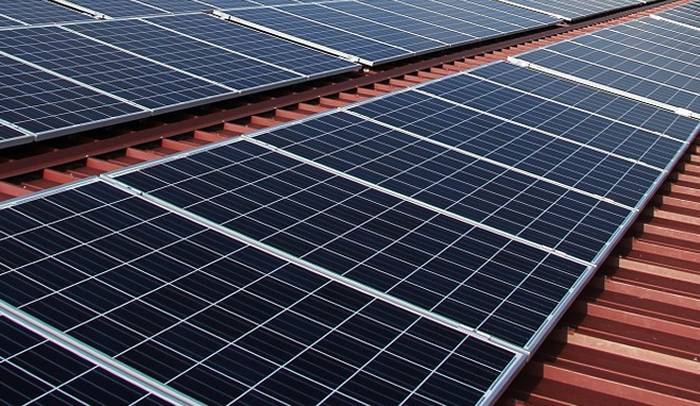
Image: schropferoval
The future of Tasmania’s solar feed in tariff from next year is still as unclear as when the Hodgman Liberal Government was returned to office in March.
As we mentioned back in March, the Hodgman Government had pledged to “review and reshape” (PDF) the feed-in tariff and “suitably reward” those with systems already installed. The review was to be conducted within 6 months of being returned to government and new arrangements implemented by January next year.
Currently Tasmania’s solar feed-in tariff is set at just over 8.9c per kilowatt-hour for solar owners, aside from those grandfathered in under a 28c scheme that stopped accepting applicants in 2013 – and that high rate will end on December 31 this year.
From July 1, the current 8.9c rate will drop slightly to 8.541 c/kWh 1, but as to what will happen after January 1, 2019 is anyone’s guess.
According to the Tasmanian Renewable Energy Alliance:
“The returned Liberal state government announced that it would ‘begin [a] review of the Solar Feed-in Tariff’ in its first 100 days. After 103 days there has been no public information about what the new feed-in tariff (FiT) will be, or even how it will be calculated.”
The Alliance says time is running out to carry out the necessary processes. The future of the feed-in tariff is of special interest to those on the legacy 28c FiT, some of whom have small systems that they wish to upgrade but can’t do so without losing the 28c rate. It’s expected there will be a bit of a rush on system upgrades when the calendar flips over to 2019, which will be good for local installers.
The Alliance says some early adopters may be tempted to go off-grid without a decent FiT, but given solar battery pricing still has some way to go before broad adoption and the larger solar capacity required to go off-grid, few are likely to do so.
The Tasmanian Renewable Energy Alliance is concerned home solar is being treated as the poor cousin to some of the state’s bigger plans, such as Battery of the Nation. If a review isn’t started soon, there’s the risk of it being rushed and a poor outcome for solar owners. There’s also the prospect of it perhaps not happening at all.
“The government is clearly focused on looking at the benefits of big projects such as pumped hydro and additional connections to the mainland.” said Alliance CEO Jack Gilding. “The state government needs to work with the Tasmanian households who are investing their own money in making our energy system more secure, more decentralised, more renewable and more affordable.”
The final Energy Security Taskforce report released last year acknowledged small-scale solar and battery storage can play a role in helping secure Tasmania’s energy future, although it stated the contribution would be small.
According to the most recent information from Australia’s Clean Energy Regulator, there are approximately 31,956 small scale solar power systems (<100kW) installed throughout Tasmania. Currently, simple payback on a 5kw solar system installed in Hobart is approximately 8.4 years.

 RSS - Posts
RSS - Posts



Why are we being penalised for trying to save on power costs? Why can’t the .28 cent tariff continue? The whole purpose of spending thousands of dollars was to help reduce our power bill. With limited sun in Tasmanian winters the 8.5 cent tarrif is a joke. Who in there right mind would go to the expense of putting in solar panels now. To receive any benefit would take 25 years or more. As a person heading to retirement I am worried about our power costs. I cannot see us affording such an increase in electricity costs.
What can you do to help the situation experienced by many citizens who in blind faith spent a large amount on solar panels without little benefit !!!!!!
Because solar reduces the amount of grid electricity a home consumes the payback time is better than the low feed in tariff suggests. Unfortunately, the payback time in Tasmania is the longest of any state. It’s roughly eight and a half years for a new system as this article shows:
https://www.solarquotes.com.au/blog/solar-payback-times/
Hi Susan,
i wouldn’t despair – even if the ‘government plan’ does indeed go ahead, such a large project usually takes longer than expected to fully complete. As best I can tell, the Tasmanian Government at the moment still in the feasibility stage and narrowing down the potential locations.
First of all the money has to be found (or borrowed) by the Government to do it, Given the current economic outlook for the next year or 3, that mightn’t be as easy as it looks. Like many State Governments, their share of Federal GST revenues would be heavily affected by any downturn in consumer spending, and thus their revenues, and stamp duty revenue will get affected by any change in the property market. There is also ‘drought risk’ factor for them to consider too .
You’ll probably still have your system significantly paid off by the time the project is ‘fully finalised’ I suspect.
Oop’s – sorry Susan, I forget to make any hopefully helpful suggestions. I assume you’ve already gone through the routine of replacing lights with their LED equivalents etc etc. Also – when household electrical items ( kitchen equipment etc ) need to be replaced, I always look for lower power using items. Fridges can consume a lot of power if they are old too. Check out some of the ‘frugal living’ websites too – there’s some really good ideas on some of them.
And don’t forget Ronald’s advice about ‘self-consumption’ – every little bit helps.